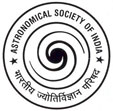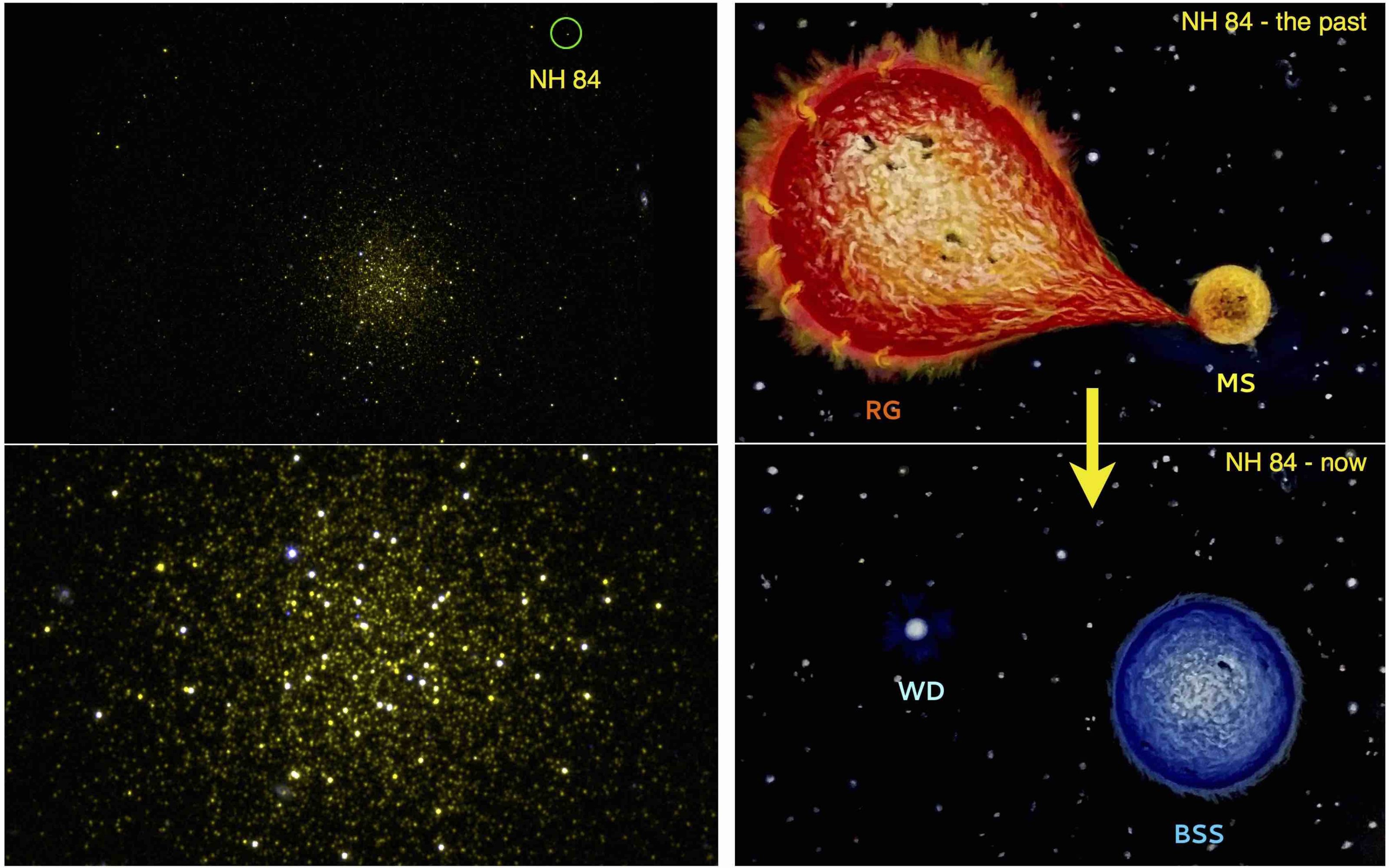March 2019:
The AstroSat Picture of the Month for March 2019 is the Globular Cluster NGC 5466 and one of its stars NH 84. On the top left is the ultraviolet image of cluster, with its Blue Straggler Star NH 84 (circled in green) that lives in its outskirts. A zoomed-in image of the cluster is on the bottom left. On the right is an artists view of the history of NH 84. The initially more massive star expanded and became a Red Giant (RG), whose outer layers were then captured by its companion (marked MS). This swallowed-up gas made the companion more massive and blue, giving it back its youth (BSS). The first star expelled its outer layers and its core shines brightly in the ultraviolet as a White Dwarf (WD).
Picture credit: Snehalata Sahu and team
Painting credit: Snehalata Sahu


“AstroSat Picture of the Month” is an initiative of the Public Outreach and Education Committee of the Astronomical Society of India and the AstroSat Training and Outreach Team.
A star relives its youth while dancing with its wizened companion in NGC 5466
This month we bring you yet another Globular Cluster, NGC 5466, located around 52000 light years from us in the constellation Bootes. However, we are going to turn our attention away from the cluster itself, and look at one particular star. This star, called NH 84, is a very special kind of star, and is what astronomers call a Blue Straggler Star, or BSS. Why are these special and how does it relive its youth?
If you have read our previous APOMs on Globular Clusters (here, here and here), you may remember that almost all stars in a cluster are born together at the same time. You may also recall that stars are born, live sedately for a long time, and then die in various spectacular ways. The more massive a star is, the faster it will evolve, and the faster it will die. More massive stars are also usually bluer and hotter, whereas less massive stars are redder and cooler. If we start with a bunch of stars that are born at the same time, like in a Globular Cluster, then as time goes by, we expect to see less and less hot blue stars, since they would have died already. Instead, we would only see the cooler, redder and older stars. Which is why astronomers were very surprised when, in 1953, Allan Sandage found young hot blue stars in old star clusters. How did these stars retain their youth in the face of time? The answer was very surprising indeed, and involved two stars instead of one.
The most common way this happens is in binary star systems, i.e., two stars orbiting each other. Snehalata Sahu of the Indian Institute of Astrophysics and her colleagues imaged the cluster NGC 5466 using the UltraViolet Imaging Telescope on AstroSat and identified many Blue Straggler Stars. In particular, they looked at one of them, NH 84, carefully and discovered that it had to be such a binary system. The bright star was a BSS which had swallowed up material from its companion star, and become more massive and bluer, reliving its youth. The poor companion, though, continued on to become a very hot and dense White Dwarf. How did these astronomers know that the companion is a White Dwarf? They deduced this based on the brightness of NH 84 that they measured in the ultraviolet wavelengths, which is where the White Dwarf shines the most. The BSS itself has a surface temperature of 8000 Kelvin, is about as massive as our Sun, and about 45% bigger. The White Dwarf, on the other hand, is 32000 Kelvin, is about half as massive as our Sun, but only 2% of its size!
This is only the second such BSS–White Dwarf pair that astronomers have found in Globular Clusters. Recently, another team led by Subramaniam had discovered, using the UVIT, another binary system where a BSS was orbiting an evolved aged star whose youth it had stolen. This latest discovery was possible because of the superior resolution and sensitivity of AstroSat in the ultraviolet. The authors are now chasing after the other Blue Straggler Stars in this cluster. Let us wait and see what discoveries await them.
The results described here have been published in this paper .
The paper describing the results is accepted for publication by the Astrophysical Journal and can be found here.
Accompanying science story is here.
Click here for the entire APOM archive
More about ASTROSAT
AstroSat, India's first dedicated multi-wavelength space observatory, was launched by ISRO on 28 September, 2015. It has five instruments on board – the Ultra Violet Imaging Telescope, the Soft X-ray Telescope, the Large Area X-ray Proportional Counter, the Cadmium-Zinc-Telluride Imager and the Scanning Sky Monitor.
Get answers to your common queries about ASTROSAT in English, in हिंदी, and in मराठी.

